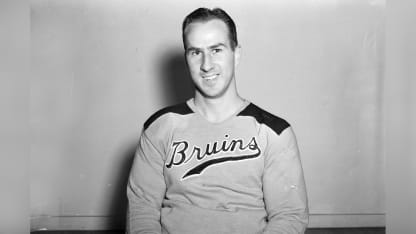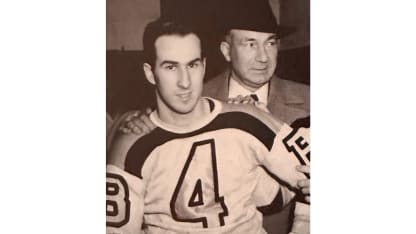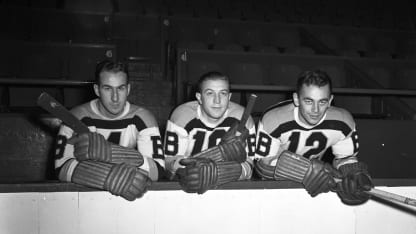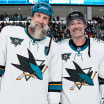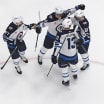Exactly 80 years ago this month Herb "Sugar" Cain of the Boston Bruins embarked on one of the most amazing scoring sprees in NHL history.
Cain had 82 points (36 goals, 46 assists) in 49 games for the Bruins in 1943-44, setting an NHL record and more than doubling his previous NHL career high (36 points; 18 goals, 18 assists) set the season before.
"Considering Cain's previous 10 years in the League, that was darn good," said Jim Hendy, publisher of the “1944 Who's Who Of Hockey,” which featured Cain on the cover. "What Herb did the next year (1943-44) bordered on the unbelievable; a gain of 46 points from 36 to 82."
The new League scoring record lasted until 1950-51 when Gordie Howe of the Detroit Red Wings had 86 points (43 goals, 43 assists), though in 70 games, 20 more than Cain.
Like Howe, Cain was deceptively speedy, packed a powerful shot and delivered precision passes. Bruins teammate Buzz Boll remarked that "Herbie was so fast that he'd beat me to all those loose pucks in front of the cage."
"Cain was a tremendous player during his long and successful career," wrote historian Andrew Podnieks in his book, ‘Players -- The Ultimate A to Z Guide.”
The Newmarket, Ontario native ended up playing 572 games over 13 NHL seasons. He finished with 398 points (206 goals, 192 assists).
"Yet every NHL points leader from 1918 to 1988 is in the Hall of Fame except Cain," hockey historian Brooke Broadbent said.
In 2022, Broadbent headed a five-person bloc that launched an elaborate bid to help Cain be enshrined in Toronto.
The team of researchers found that Cain's numbers compared favorably to his contemporaries who made it into the Hall. But Cain remains out in the cold. To this day Cain is the only scoring champion not in the Hall of Fame.
Goals and assists punctuated Cain’s career along with controversy. This included a bitter dispute with Bruins boss Art Ross. According to published reports, Ross allegedly blackballed Cain at the end of his stint with the Bruins.
